Perseus
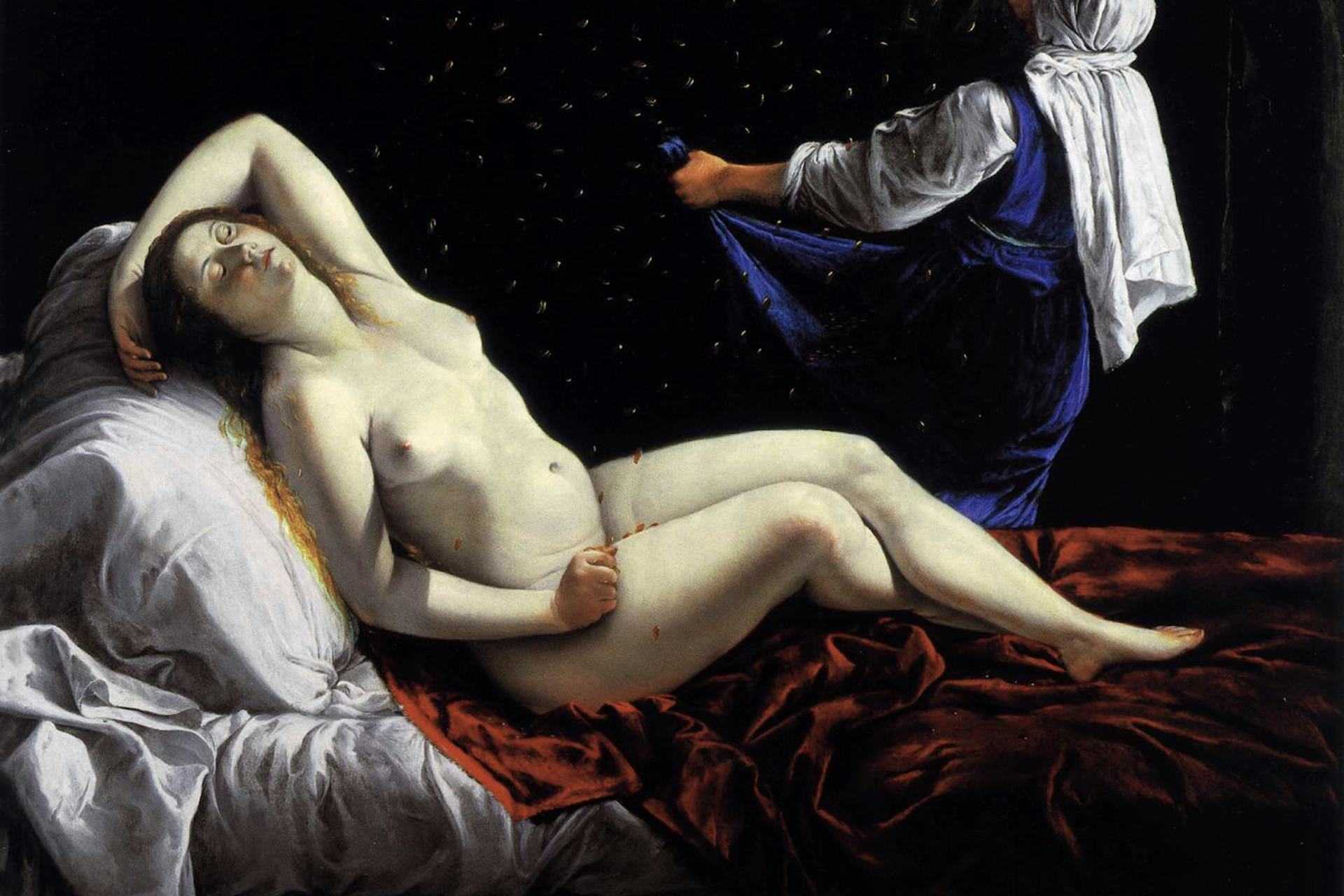
Danae by Artemisia Gentileschi (ca. 1612)
Saint Louis Art Museum, St. Louis, MOPublic DomainOverview
Perseus, son of Zeus and the Argive princess Danae, was a Greek hero and king connected with the Argolid. Perseus’ numerous exploits included beheading Medusa, saving the princess Andromeda, and founding the city of Mycenae and the Perseid dynasty.
Banished from Argos before he was born (due to an ominous prophecy), Perseus grew up on a remote island. When he came of age, he was sent to kill the Gorgon Medusa, a monster whose gaze turned all who looked upon her to stone. Later, while passing through Ethiopia, Perseus rescued the princess Andromeda from a sea monster and made her his wife.
At the end of his adventures, Perseus became the ruler of Mycenae and founded the important dynasty of the “Perseids.” The Greeks of the Argolid revered Perseus as one of their most important ancestral heroes.
Key Facts
Who were Perseus’ parents?
Perseus was the son of Zeus, the king of the gods, and Danae, a mortal princess and daughter of the Argive king Acrisius.
Danae’s father was told by an oracle that he was destined to die at the hands of his grandson. Thus, he locked Danae up in a dungeon to prevent her from ever bearing a son. But Zeus visited Danae as a shower of gold dust, and Perseus was conceived from their union.
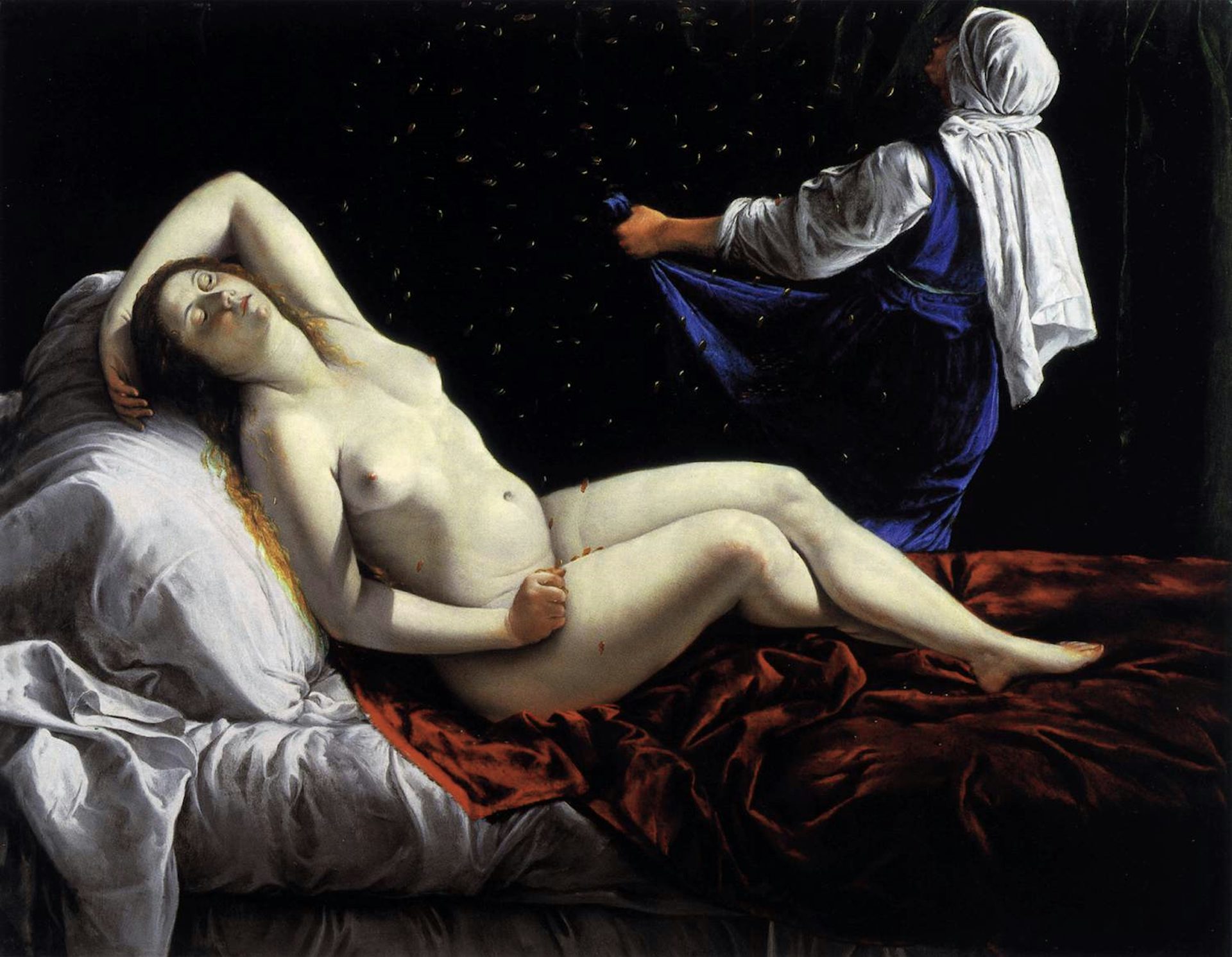
Danae by Artemisia Gentileschi (ca. 1612)
Saint Louis Art Museum, St. Louis, MOPublic DomainWhere did Perseus live?
Perseus was conceived, and perhaps born, in Argos, the homeland of his mother Danae. But when his grandfather Acrisius discovered that Danae had become pregnant despite his precautions, he locked her and her child in a chest and threw it into the sea. The chest floated safely to the island of Seriphos, where the mother and son were taken in by a kindly fisherman.
Years later, after accomplishing various heroic feats, Perseus returned to the Argolid to reclaim his birthright. He became king of Mycenae (or Tiryns, in some versions), establishing the great mythical dynasty of the Perseids.
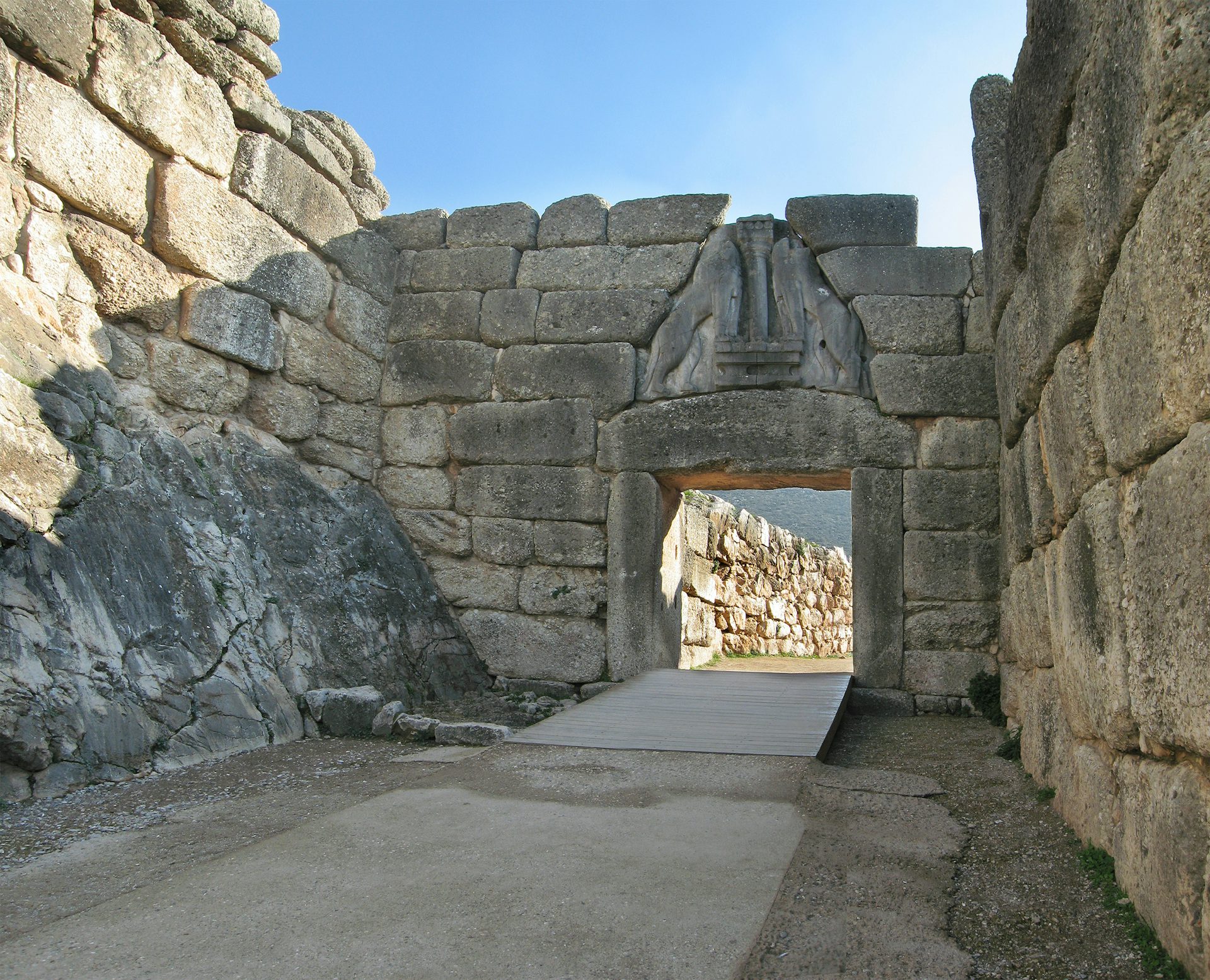
A photo of the Lions Gate in Mycenae
Andreas TrepteCC BY-SA 2.5Who was Perseus’ wife?
Perseus married Andromeda, an Eastern princess. Andromeda’s mother, Cassiopeia, had offended the sea gods by boasting of her own beauty; as punishment for this arrogance, she was made to sacrifice her daughter to the gods. Andromeda was thus chained to a cliff on the seashore to be devoured by a sea monster sent by Poseidon.
Perseus happened to be passing by at this time. Seeing the beautiful girl chained to a rock, he killed the sea monster and returned her to her parents. In gratitude, Cassiopeia and her husband Cepheus gave Andromeda to Perseus in marriage.
Perseus and Andromeda soon traveled to Greece, where they had many children. They are remembered as the ancestors of a number of great heroes, including Heracles.
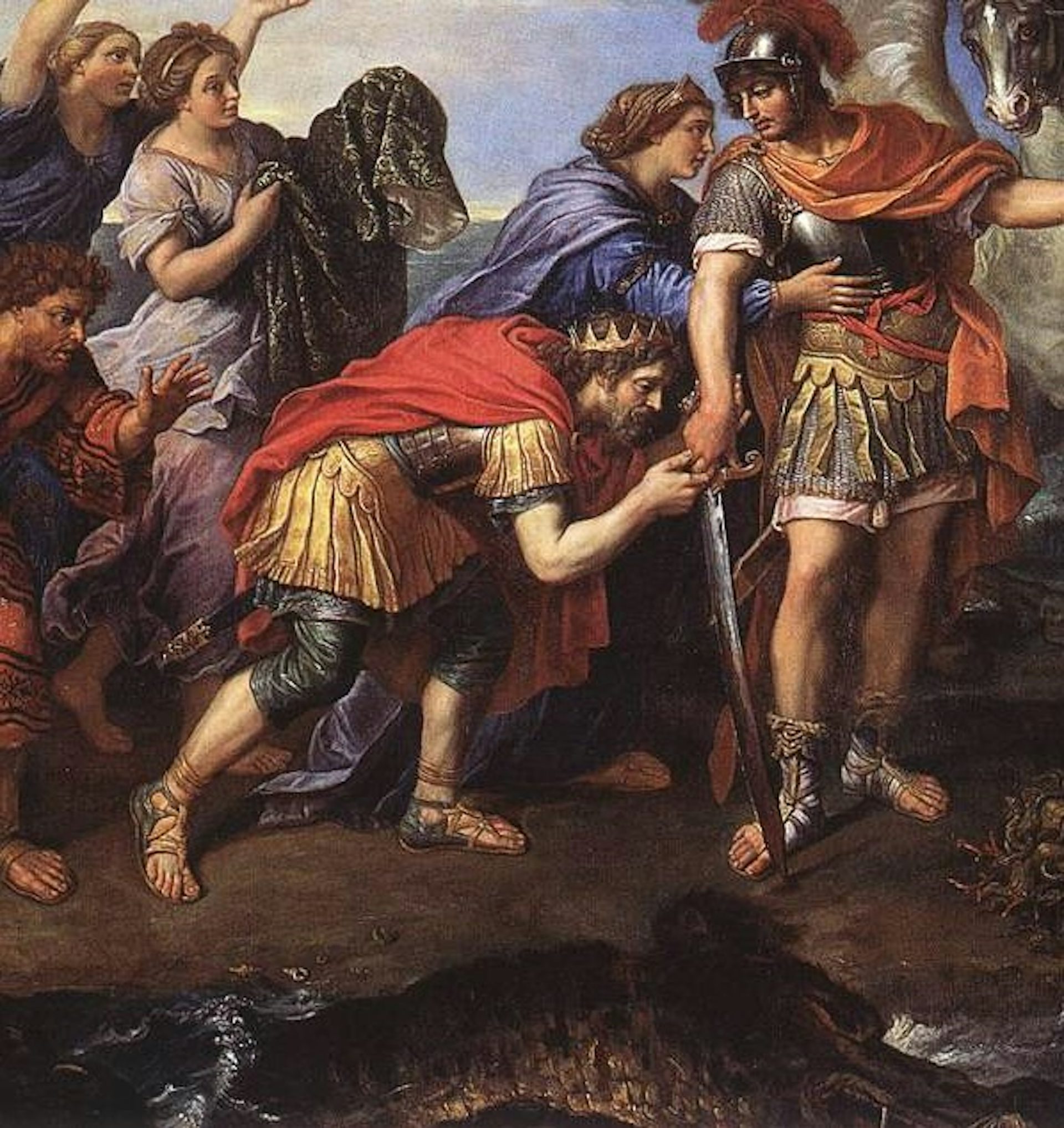
Detail from Perseus and Andromeda by Pierre Mignard I (1679). Cepheus is depicted kissing the hand of Perseus after he rescues his daughter Andromeda.
Louvre Museum, ParisPublic DomainPerseus Slays Medusa
Perseus was sent to kill Medusa by Polydectes, the king of Seriphos (Polydectes wanted the young man out of the picture so he could marry his mother Danae). The king thought that Perseus would be killed on his mission, since Medusa was a terrible Gorgon whose gaze turned people to stone.
But Perseus had considerable help from the gods, who gave him the tools he would need to fight Medusa: an adamant sickle, a mirror-polished shield, winged sandals, Hades’ helmet of invisibility, and a special satchel to contain the Gorgon’s head. Thus armed, Perseus beheaded the monster and brought the terrible head back to Polydectes—who turned to stone as soon as he looked at it.
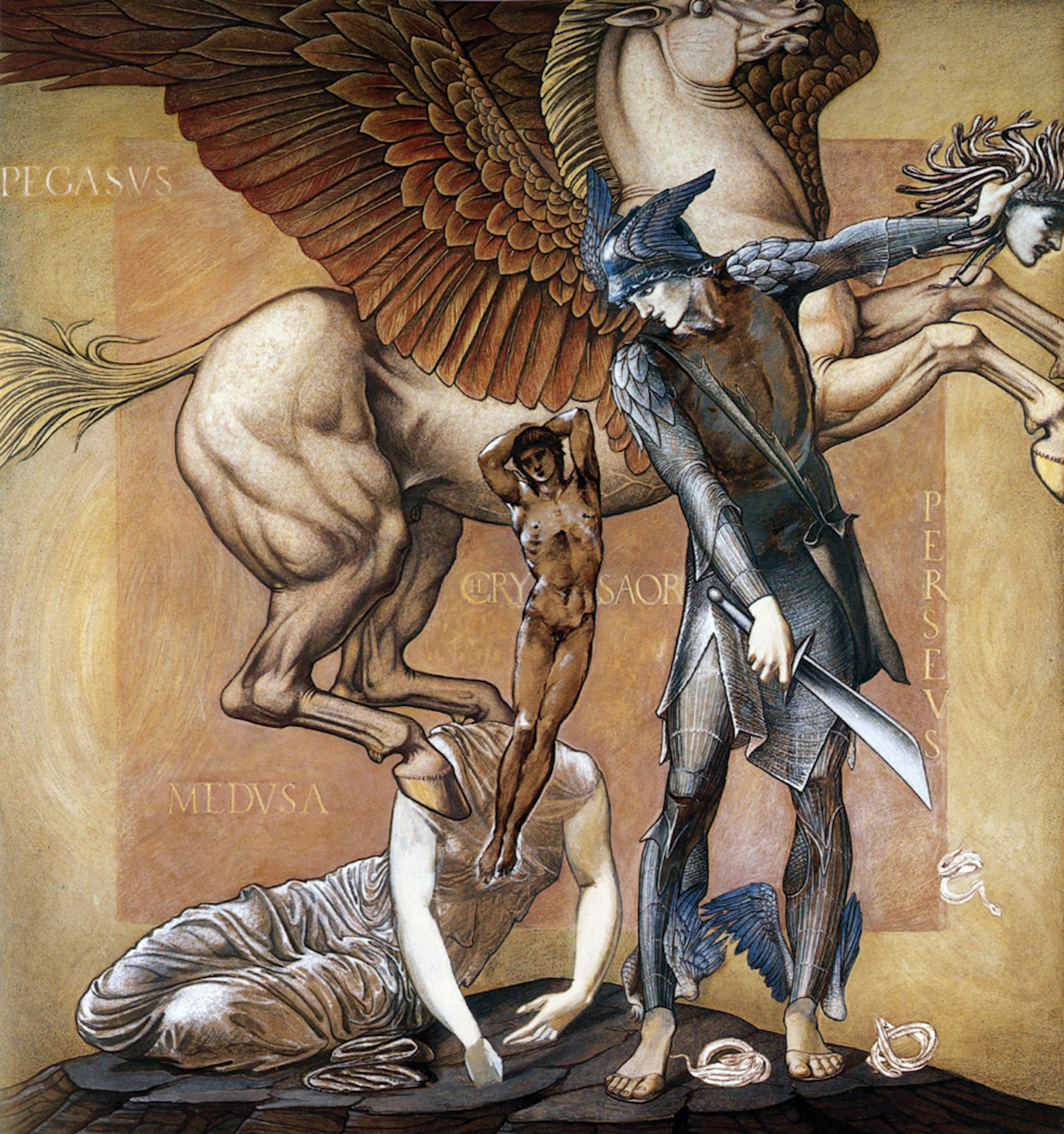
The Death of Medusa I by Edward Burne-Jones (1882)
Southampton City Art GalleryPublic DomainEtymology
The etymology of Perseus’ name is obscure. An ancient folk etymology connected the name “Perseus” with the Persians, as he was sometimes said to have been their ancestor.[1]
Scholars in the eighteenth and nineteenth centuries often believed the name was derived from the Greek verb πέρθειν (perthein, "to sack, destroy"), combined with the ending -eus, which is common in many early Greek names (Theseus, Prometheus, etc.): Perseus’ name is thus translated as “the destroyer.”[2]
Other scholars have suggested that his name is connected with the underworld goddess Persephone[3] or even with the Hittite war god Pirwa.[4]
Experts also disagree on when the name and its bearer originated. Martin Nilsson confidently dated Perseus and his myths to the Bronze Age (ca. 1600–1100 BCE),[5] while T. P. Howe has argued that the name and the hero were invented later, perhaps during the Archaic Period (ca. 800–490 BCE).[6]
Pronunciation
English
Greek
Perseus Περσεύς Phonetic
IPA
[PER-see-uhs] /ˈpɜːrsiəs, -sjuːs/
Attributes
An early hero and a famous slayer of monsters, Perseus was usually represented with the weapons and artifacts he received from the gods to fight Medusa: an unbreakable sword, a helmet of invisibility, a mirror shield, winged sandals, and a magic satchel. In ancient and modern iconography, he is often shown holding the head of Medusa, which he wielded to turn his enemies to stone.
Following his exploits, Perseus built the city of Mycenae. Located in central Greece (in the northeast corner of the Peloponnese), this was one of the most important cities in Greek mythology. Perseus’ name became associated with the powerful Perseid dynasty, which included not only many Mycenaean kings but also famous heroes such as Heracles.
Family
Perseus was a son of Zeus, the ruler of the Greek gods.[7] His mother was Danae, the daughter of Acrisius, king of Argos. On his mother’s side, this made Perseus a descendant of the first ruling dynasty of Argos, which traced its origin to the river god Inachus.
With his wife Andromeda, Perseus had many children. According to Apollodorus, Perseus had six sons (Perses, Alcaeus, Sthenelus, Heleus, Mestor, and Electryon)[8] and one daughter (Gorgophone).[9]
Family Tree
Mythology
Birth
Like many of the children Zeus had by mortal mothers, Perseus’ early years were tumultuous and unhappy. Before Perseus was born, Acrisius, the king of Argos, was warned that he would one day be killed by his grandson. Acrisius therefore imprisoned his only child, Danae, to prevent her from ever having a son.
But Zeus fell in love with the beautiful Danae and visited her as a shower of gold dust. Soon after, Danae gave birth to Perseus.[10]
Acrisius, still fearful of the prophecy that he would be killed by his grandson, locked Danae and the baby Perseus in a chest, which he threw into the sea. The chest floated across the sea for many days until it finally washed ashore on the island of Seriphos.
There, Danae and Perseus were found by Dictys, a fisherman and the brother of the king of the island, Polydectes. The kindly Dictys took in Danae and helped her raise Perseus.
Medusa
When Perseus had grown to manhood, Polydectes, the king of Seriphos, fell in love with Danae. Danae, however, did not wish to marry Polydectes, and Perseus protected his mother from Polydectes’ unwanted advances. Polydectes then began plotting to get rid of Perseus.
One day, Polydectes held a large banquet at which each guest was ordered to bring him a gift. Of Perseus, Polydectes demanded the head of Medusa. This was regarded as a nearly impossible task: Medusa was one of the three monsters known as the Gorgons, whose heads were ringed by snakes instead of hair and whose gaze turned people to stone. Not shrinking from the daunting task, Perseus promised to bring Polydectes the head of Medusa.
In his quest for Medusa, Perseus was guided by the goddess Athena, the daughter of Zeus and thus his divine half-sister. Athena explained to him that only the Hesperides, the maidens guarding the grove of Hera, could tell him where to find Medusa and the Gorgons. But first, Perseus needed to find the Hesperides.
Instructed by Athena, Perseus visited the Graiae, the sisters of the Gorgons, to learn the whereabouts of the Hesperides. The Graiae were three old women who shared a single eye between them. Perseus sneaked up on the Graiae and snatched away their one eye, which he agreed to give back only after they told him where to find the Hesperides.
When Perseus reached the Hesperides, he was given a special satchel that could safely carry Medusa’s head. The other gods also helped supply Perseus for his quest: from Athena, he received a shield with a polished face; from his father, Zeus, he received an unbreakable sickle; from Hades, he received a helmet that rendered him invisible; finally, from Hermes, he received winged sandals.
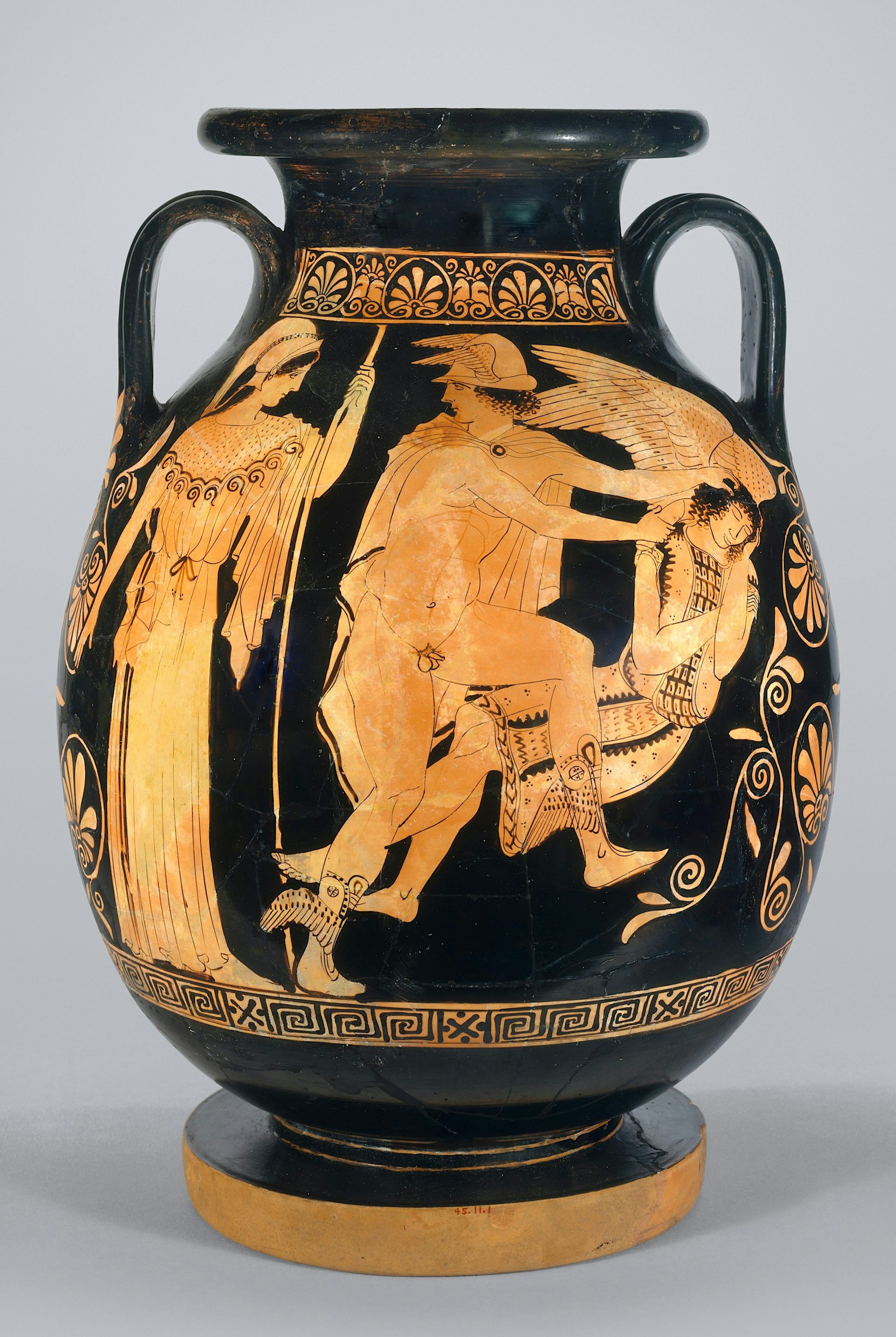
Vase painting showing Perseus beheading a sleeping Medusa, attributed to Polygnotus (450–440 BCE). Perseus looks to Athena and away from Medusa to avoid turning into stone.
Metropolitan Museum of ArtPublic DomainThus equipped, Perseus went to the cave of the Gorgons. When he found Medusa, he was able to approach her without turning to stone by looking at her reflection in Athena’s shield. He then cut off Medusa’s head using Zeus’ sword. When Medusa’s blood spilled to the earth, the winged horse Pegasus and his brother Chrysaor were born. Using Hades’ helmet of invisibility, Perseus snatched away Medusa’s severed head and escaped.
Andromeda
As Perseus made his way home, he passed through Ethiopia. There, he witnessed a strange and terrible scene: a beautiful young girl was bound naked to a rock, waiting for a sea monster to emerge from the depths and devour her. Cassiopeia, the queen of Ethiopia, had boasted that she was more beautiful than the fifty daughters of the sea deity Nereus.[11] This angered Poseidon, who brought destruction on Ethiopia and would only be appeased if Cassiopeia sacrificed her daughter Andromeda to him. Andromeda was thus left in chains at the sea’s edge for Poseidon’s sea monster Cetus.
This was the scene that was unfolding as Perseus arrived in Ethiopia. Approaching Cassiopeia and her husband Cepheus, the king of Ethiopia, Perseus offered to save Andromeda’s life in exchange for her hand in marriage. Cassiopeia and Cepheus agreed (though no version of the myth explains why they abandoned their plans for sacrifice). Perseus subsequently killed Cetus and set Andromeda free.
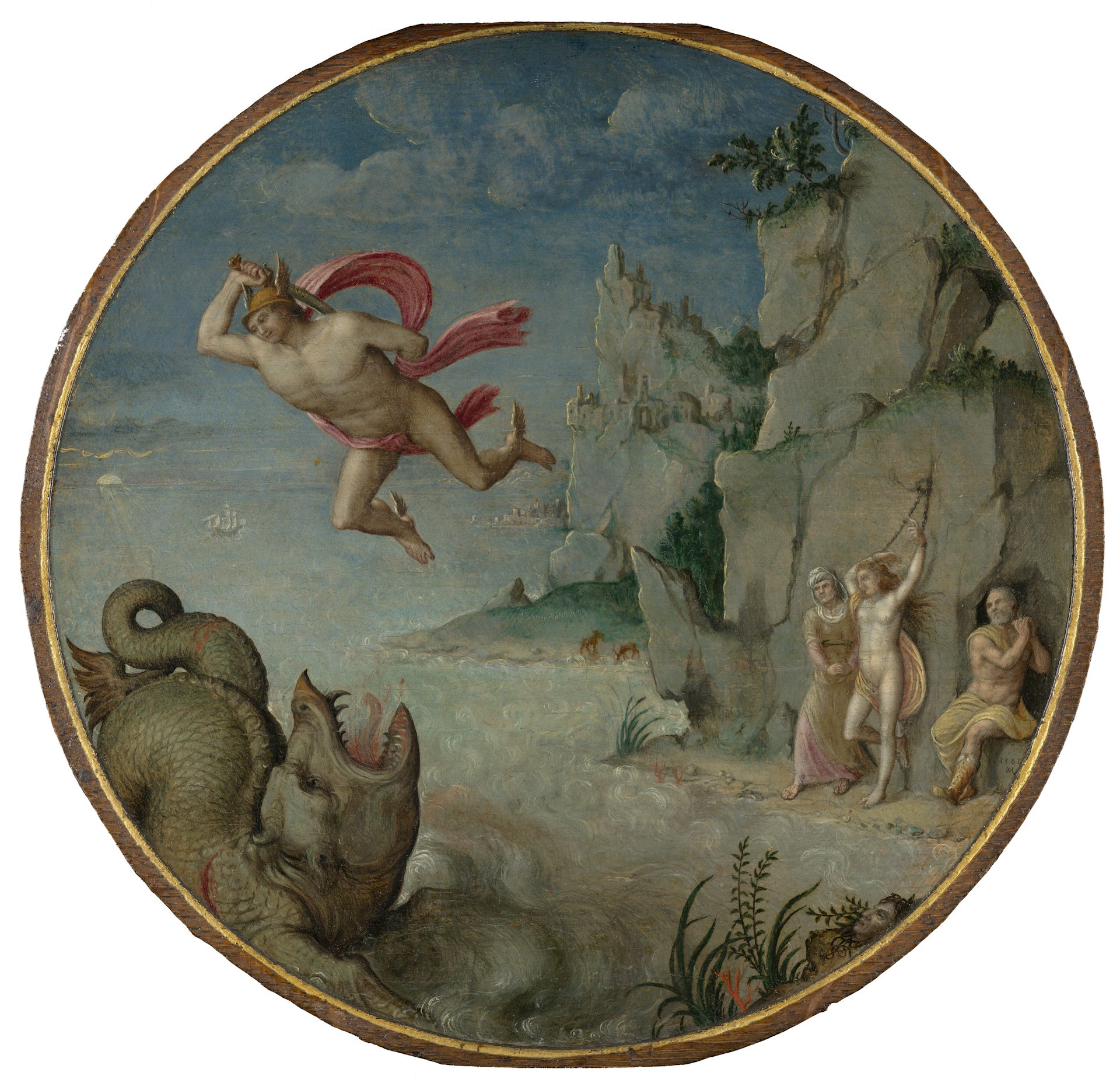
Perseus and Andromeda by Jan Keynooghe (1561).
MauritshuisPublic DomainThe wedding of Perseus and Andromeda was disturbed, however, by the arrival of her uncle Phineus, who had originally been engaged to Andromeda. A quarrel erupted. In the end, Perseus turned Phineus and his supporters to stone by displaying Medusa’s head.
Homecoming
Perseus finally came back to Seriphos with his new bride, only to find that Polydectes had continued to pursue his mother, Danae. Perseus decided to end Polydectes’ unwanted advances once and for all. Going to Polydectes’ palace, Perseus showed the lecherous king the “gift” he himself had requested: the head of Medusa. Polydectes, disbelieving, looked at the Gorgon’s head and turned to stone.

The Wedding of Perseus Interrupted by Phineus by Hugues Taraval (1767)
Wikimedia CommonsPublic DomainAfter setting up Dictys as king of Seriphos in place of his brother Polydectes, Perseus returned to Argos, the kingdom of his grandfather Acrisius. When Acrisius learned of Perseus’ return, however, he fled the city, still dreading the prophecy that had predicted he would be killed by his grandson.
While Perseus was taking part in athletic games in the city of Larissa, he threw a discus, which struck an old man in the audience and killed him immediately. Later it was discovered that the victim was none other than his grandfather, Acrisius, thus inadvertently fulfilling the prophecy. Saddened, Perseus buried his grandfather and gave the kingdom of Argos to his cousin Megapenthes.
The House of Perseus
According to many traditions, Perseus then ascended the throne of Tiryns and founded the city of Mycenae.[12] He would become famous for building the formidable walls of Mycenae, made of boulders fitted tightly together without mortar. These fortifications, which are still standing today, were called “Cyclopean” in antiquity because they looked like they could only have been built by the giant Cyclopes.
Perseus founded the powerful House of Perseus, which supplied generations of kings and heroes. Through the children he had with Andromeda, Perseus became the ancestor of many important people, including the Persians, Heracles, Helen of Troy, and the Dioscuri (Castor and Polydeuces).
Worship
Temples
Perseus was sometimes worshipped as a hero in ancient Greece. The earliest evidence of his cult has been found in Mycenae: an inscription from the late sixth century BCE mentions “priestly analysts” of Perseus (an obscure term probably referring to record-keepers who also performed religious functions).[13]
Pausanias, a geographer who lived in the second century CE, wrote that in his own time the most important sanctuaries to Perseus were in Seriphos and Athens. He also described an altar to the hero on the road from Mycenae to Argos.[14] However, these cults do not seem to have existed before the Hellenistic Period (323–31 BCE). Aside from these scraps, little is known of the hero worship associated with Perseus.
Pop Culture
The myth of Perseus does appear in contemporary popular culture, even if Perseus is not as familiar as some other Greek mythical figures (such as Heracles). The 1981 film Clash of the Titans (remade in 2010) is loosely adapted from the myth of Perseus. Percy Jackson, the main character of Rick Riordan’s book series Percy Jackson and the Olympians, is named after Perseus.
In his modern portrayals, Perseus is generally a rather one-dimensional hero: brave, chivalrous, determined, noble. This is more or less in line with Perseus’ representation in ancient myth, where he was chiefly motivated by a desire to defend the weak (his mother, Andromeda) and never shrank from even the most daunting tasks.